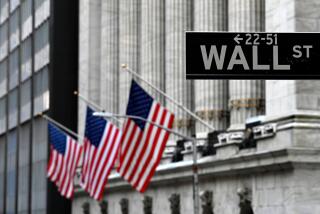End-of-the-Year Bait Cutting
Brian C. Rogers, who has managed T. Rowe Priceâs well-performing Equity Income fund for 11 years, uses the end of the year to sit back and think of little things--namely the several scattered small positions in his $7.7-billion fund.
âI like to enter a new year with a more focused, as opposed to a more diverse, portfolio,â he said.
Other fund managers use the yearâs end a bit differently. But Rogers is engaged in a little housecleaning.
Although he declined to name the companies or industries heâs selling, Rogers described his strategy this way: Often during the year, he accumulates small positions in companies that look attractive in his initial research. By buying a position, Rogers said, his attention gets focused more squarely on the company and whether itâs something the fund should hold for the long term.
Sometimes the investment idea blossoms into a large holding and other times it doesnât. Although Rogers always is pruning the portfolio to raise cash for other, more attractive, investments, he takes time at year-end to reevaluate the fundâs very small positions, those that are from a tenth to two-tenths of the fundâs total assets.
âI have to force myself to either buy a lot more or get out of it,â he said.
Rogers, like all active mutual fund managers, makes continual adjustments in his portfolio, so in some sense the calendar makes little difference to his investment style. Mutual funds are required under tax law to distribute 98% of their capital gains and earnings to shareholders each year, and most funds do trading for tax purposes--such as selling losing positions to record a capital loss to reduce taxes owed on other capital gains--before Oct. 31, the tax law deadline for doing so.
Fund managers do prepare semiannual reports to shareholders in June and December, however, and some have been accused of âwindow dressingâ--buying shares that have gone up a lot in price and selling losers--so they can include the market darlings as part of their holdings in the shareholder report and neglect to mention the underperformers they held for much of that time. Such trading can be a drag on performance, though.
âYouâre not fooling anyone by doing that,â Rogers said. He noted that he recently âbought a tonâ of AT&T; stock, which he believes is a good value, trading in the last month for between $34 and $39 a share.
Michael K. Arends and George Askew are using the end of the year to âget ahead of the wave.â Arends manages the $250-million Phoenix Aggressive Growth fund and Askew manages the U.S. portion of the $150-million Phoenix Worldwide Opportunity fund. They have been buying stocks that they believe will rise in price next month as part of whatâs called the âJanuary effect.â Thatâs the tendency of laggard stocks, sold heavily in the last three months of the year to lock in capital losses, to rise in January as investors see value in their low prices.
âSince the market hit its lows around July 30, itâs really been driven upward by movement in the [big-capitalization] stocks,â Arends said, alluding to companies with a market value of $2.5 billion or more. âWe think theyâll continue to hold up in January, but there will also be a real opportunity for small-cap stocks [worth $750 million or less] to pick up.â
One area that both Arends and Askew like is capital equipment suppliers to the semiconductor industry. âSemiconductors had been in a yearlong funk. Then we started to see a rebound in July and August as the excess inventory was worked through,â Askew said. âNow we think theyâre in a major product cycle,â in which companies such as Intel will need to buy new manufacturing equipment to make next-generation computer chips.
More to Read
Inside the business of entertainment
The Wide Shot brings you news, analysis and insights on everything from streaming wars to production â and what it all means for the future.
You may occasionally receive promotional content from the Los Angeles Times.









